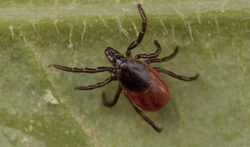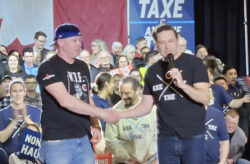The February cold didn’t stop hundreds in Canada and the United States from going into their backyard and counting the birds.
The Feb. 18-21 weekend was the 25th annual Backyard Bird Count, organized by the Cornell Lab of Ornithology, Birds Canada, and the National Audubon Society.
Held every February over the Family Day weekend, the event allows newcomers and seasoned bird watchers to gather important data on birds.
“I always say birding is a soulful experience, and you get that from doing the bird count.”
— Bob Volks, owner, Gilligallou Bird Inc., Almonte, Ont.
Participants watch birds at least once for 15 minutes or more during the four-day event and record all the birds they see or hear through recommended apps.
The event, which was started in the U.S. in 1998 by the Ithaca, New York-based Cornell Lab and the National Audubon Society, was the first online citizen’s project that collected real-time data about wild birds.
In 2009, Birds Canada joined to give bird watchers in Canada the opportunity to participate and gather more information on wild birds.
“To understand the bird movements and populations in the U.S., you need the Canadian information as well, because, in the wintertime, all the birds are moving across borders,” said Kerrie Wilcox, project manager at Birds Canada. “So you can’t just monitor one of the countries without both to get a full picture of what birds are doing in North.”


According to Wilcox, the bird-counting event has been well received by the public, with the number of participants increasing each year.
“Well, it’s been growing annually, and last year in Canada, it grew like over 100 per cent the number of checklists, which is really amazing,” Wilcox said a few days ahead of this year’s event.
Wilcox said she believes part of the reason for such an increase is because of the COVID-19 pandemic and people being stuck at home and watching the birds outside their windows.
“People are really enjoying watching the birds from their home. So, more people participate. It was also something that people could do safely. So, I think that’s had a big impact on participation last year,” said Wilcox.
The information collected helps explain overwintering birds’ distribution globally, said Jon Ruddy, a bird guide and field ornithologist.
“So, during the summer, you have birds that are breeding way up in the Arctic, you have birds down in more temperate zones,” said Ruddy. “But in the winter, a lot of birds are concentrated in certain places, and it illustrates their overwintering range and the changes to their distribution and their abundance.”
The data is made reliable by safeguards put in place in the apps used to upload the birds individuals are counting.
“We’ve got filters on all of the data. So, if anyone enters something that is out of the ordinary, they get an automatic question back, are you sure this is what you saw?” said Wilcox. “And if it’s a rare bird, we ask you to upload a photo … and then we have reviewers in every community … that also check to make sure that nothing is entering the database that isn’t (correct).”
Bob Volks, owner of Gilligallou Bird Incorporated in Almonte, Ont., west of Ottawa, said his love for bird watching has led him to participate in the Backyard Bird Count, and others like it, for many years.
He said he likes that he is contributing to something that could help inform decisions being made about bird conservation. He said he’s also drawn by the pure enjoyment and connection with nature he gets from bird watching.
“I always say birding is a soulful experience, and you get that from doing the bird count,” said Volks.
Volks said he’s looking forward to final compilations of the bird count data on the American gold finch because a large part of the population has been lost and, in his view, it has never completely recovered in his area.
“It’s the beginning of early migration… So, people are now starting to get flocks of gold finches. So, I’m interested to see what happens with the numbers,” said Volks.




